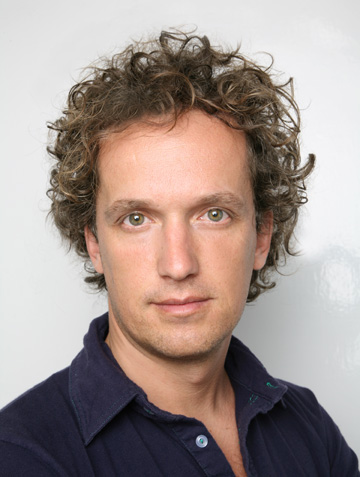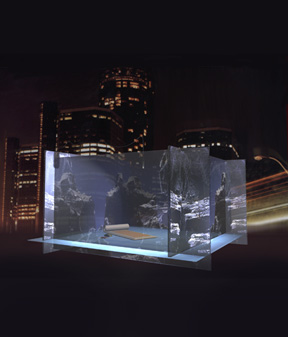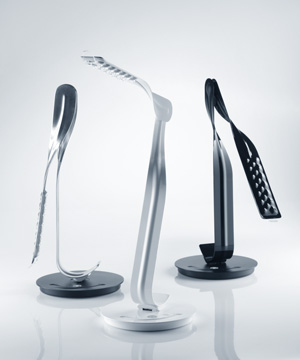THE YVES BÉHAR TOP 5
Born and raised in Lausanne, Switzerland, the son of a Turkish immigrant father and an East German mother —Yves Béhar is certainly no stranger to the confluence of ideas and concepts . He came to the U.S. in 1990 to study at the Art Center College of Design in Pasadena. In 1999 he founded the aptly named fuseproject, a multifaceted design enclave he helms out of San Francisco.
In the past decade, Béhar has become one of the most acclaimed and sought after names in contemporary design. He wields an award winning design proficiency that spans the gamut: furniture, fashion,graphics, packaging, environments, strategy… So we imagined he’s put some thought into the art of living well—that’s why we asked him to list 5 innovations he couldn’t live without.
The Yves Béhar Top Five (In no particular order):
1. INSTANT MESSAGING.
Instant Messaging?
Yes. It’s immediate and convenient. It helps me get to the core of things.
Do you ever feel like it’s abbreviating the world?
There’s a time for brief moments and there’s a time for longer moments. I don’t subscribe to these lengthy over-worded European communications, there’s a time for that sort of formality— but most of the time I need the immediate input… it bridges things together.
Speaking of bridging, you sort of collapse time with a conceptual piece — The Dream Room (conceived for Dwell Magazine). This is a space with with floor to ceiling “digital wallpaper” that can be programmed to morph into landscapes or vistas —
The idea is that design should adapt to the user. It needs to be intuitive and environmental…
You’re known for bringing concepts into the tangible realm. How far are we away from a fully functional Dream Room?
A lot in our laboratory of ideas take three to five years to realize—in this particular case digital wallpaper, digital glass is about seven or ten years away. We put concepts out to show what we feel the potential for the technology is. It’s important for designers do that.
2. THE LEAF LAMP
The Leaf Lamp is one of your own designs for Herman Miller—
It’s basically the only lamp you’ll ever need. It changes mood, you can adjust it when you want to work and then again for when you need it to be romantic. It’s also environmental —from an energy consumption standpoint. It uses 40 percent less power than other compact fluorescent lights, and lasts up to 60,000 hours.
3. GPS (Global Positioning System)
A GPS is an advanced form of a compass, no?
I can’t think very much about how to get from point A to point B so I need a GPS.
It means your car is talking to you—
Yes, not too loud— but it does talk to me.
Would you say this another innovation that compresses time?
It’s liberating in the sense that it makes you think about the journey without planning it. Not dwelling on the details of it.
If you could, how would you enhance GPS?
I would make it a lot more intuitive, less robotic (as in the voice talking to you). It would be more of a gentle guidance and naturally integrated into the driving experience—rather than a little screen on the side that blasts orders at you.
Speaking of enhancements– technological gadgets trend towards becoming smaller, eventually disappearing into the body. Do you have any resistance to the idea of say having a chip in your head as a GPS?
Maybe I’m too squeamish to have technology integrated into my body. I like it when it’s invisible. I like it surrounding us, I like it in our lives—but to me the body is separate. I’m not much of a tattoo/piercing guy.
Technology should be non-intrusive and putting it in to your body is probably the highest form of intrusion. The people who talk about the future in this way are the same people who make GPS machines too loud. The same people who make technology really annoying.
For example?
The ringer on cell phones. The fact that cellphones ring—they really shouldn’t, I haven’t turned my ringer on in several years. I don’t understand why anybody needs them.
4. MY SURFBOARD
Let’s talk about your surfboard: it’s primitive, but it’s a design that has worked for a long time—
I guess its the other side of life (as opposed to the GPS) where you have to be very present and very in tune with nature. That said, there’s a subtlety to their shapes where you can feel any small difference in size or volume. There is a primary interaction with an object like a surfboard—its very primordial, everything it does you can sense and everything it is gives you a certain kind of feedback.
In terms of “primordial feel” and instinct—is that something we should generally experience with present day technology?
This is what I’ve been building up to—technology that always feels natural and integrated rather than disruptive and distracting.
5. OLPC (One Laptop Per Child) a.k.a $100 Computer
This is an intriguing project—
The concept was created, invented and pushed by Nicholas Negroponte, the Chairman of the MIT Media Lab. He came to us to design the physical experience, integrating the technology into the product and creating an object that would bridge the digital divide between the West and developing countries.
It’s amazing to have been involved at every level of this project over the past two years. This is where technology needs to go next: right now it has affected maybe one billion of the people on the planet, but with the right design, the right product and the right type of interaction we can provide education, communication to children everywhere. It’s the only project I know of where there is specific hardware and software designed for these conditions.
It is also the one example in the fifteen years of my career which points at the original goal of the Computer/IT industry which was to provide access to information for all. I think we’ve reached that goal on a small level and we need to pursue it on a global scale.
For more about Yves Behar and fuseproject, visit http://fuseproject.com




